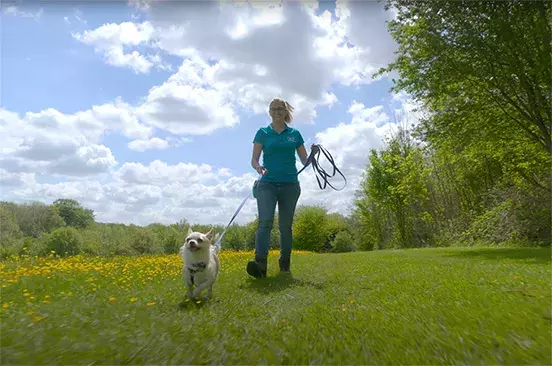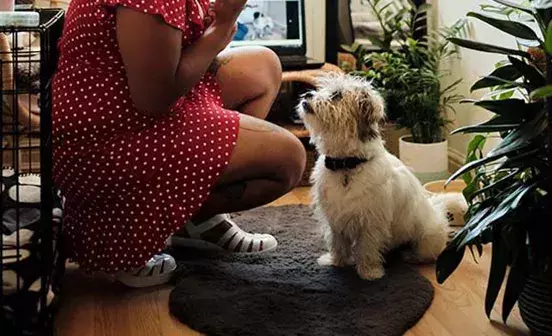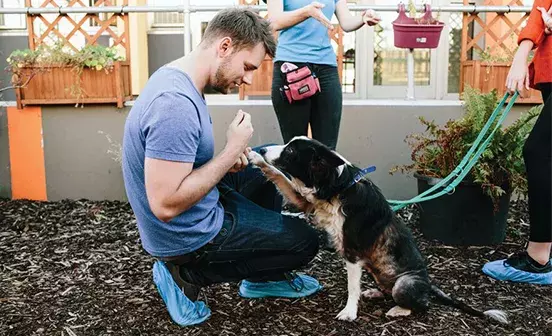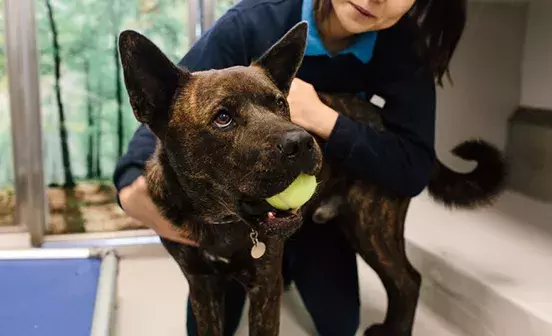Getting your dog to stop pulling on the lead can be a tricky, but our behavioural experts can show you how to take the first steps towards getting your dog to walk nicely on the lead.
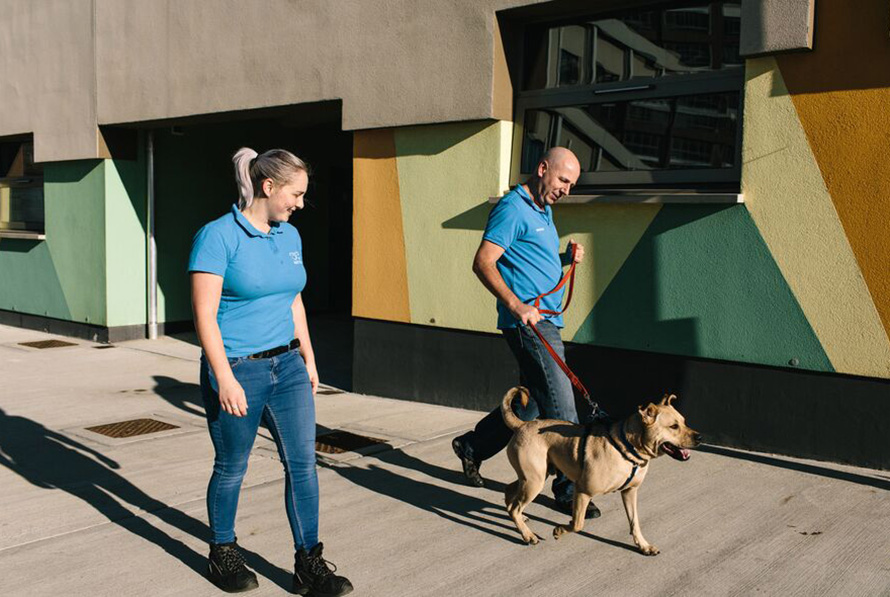
Training your dog to walk on a lead or loose lead walking, is essentially training your dog to walk by your side. This is a good exercise to practice to ensure walks with your dog are safe and enjoyable for both of you. It also encourages your dog to give you their attention. It’s best to start loose lead training indoors, away from other distractions.
Watch our video and take the first steps towards getting your dog to walk nicely on the lead.
Lead walking equipment
From collars and harnesses to leads, there is a lot to consider when choosing what equipment is best for your dog. By law all dogs must wear a collar and identification tag and for this it’s best to have a flat collar. Collars and harnesses that tighten as your dog pulls are generally not recommended as these can cause discomfort to your dog.
If your dog is strong you may find a harness with a front and back ring is most efficient as these give you more control from your dog’s chest, especially when used with a double clip lead. Head collars can be used on larger dogs, but these must be introduced slowly and positively. Three to four foot leads (training leads) are best to use for teaching your dog to walk with a loose lead. Retractable leads, slip leads, and long lines are not appropriate for this training.
Step one
Hold the lead in your left hand and treats in your right hand. Use the treats to lure your dog round to your right-hand side so they are standing, facing the same direction as you. The lead should be crossing over your body and held loosely with your left hand only. Feed them a treat. This is your starting position. Once they have eaten the treat they may move away, so lure them back to your side again and give them another treat. Feed them again for staying in the same place. If you prefer your dog on your left-hand side, then hold the treats in your left hand and the lead in your right hand.
Step two
With your dog in the starting positing, let them sniff the treats in your right hand. Once they have done this, raise your hand to your shoulder, give an instruction such as “with me” and take a step forward. Stop and feed your dog a treat for coming with you. Your cue word can be anything such as “let’s go”, “heel” or “close” but which ever word you use, ensure you stick to it.
Step three
Repeat step two, adding in another step before rewarding. If your dog pulls or moves away from your side, simply stand still and lure them back to the starting position. Do not pull the lead to move them, just stand still and lure them back with a treat.
Step four
Practise steps one to three, each time trying to increase the number of steps taken before rewarding. Aim for success and stop and treat while your dog is walking by your side.
Once you’ve mastered this indoors, take your training outside. Consistency is key with loose lead walking so ensure you’re training every single time the lead goes on. When you are starting to train in a distracting environment, be sure to adapt your rate of reinforcement to keep your dog motivated. 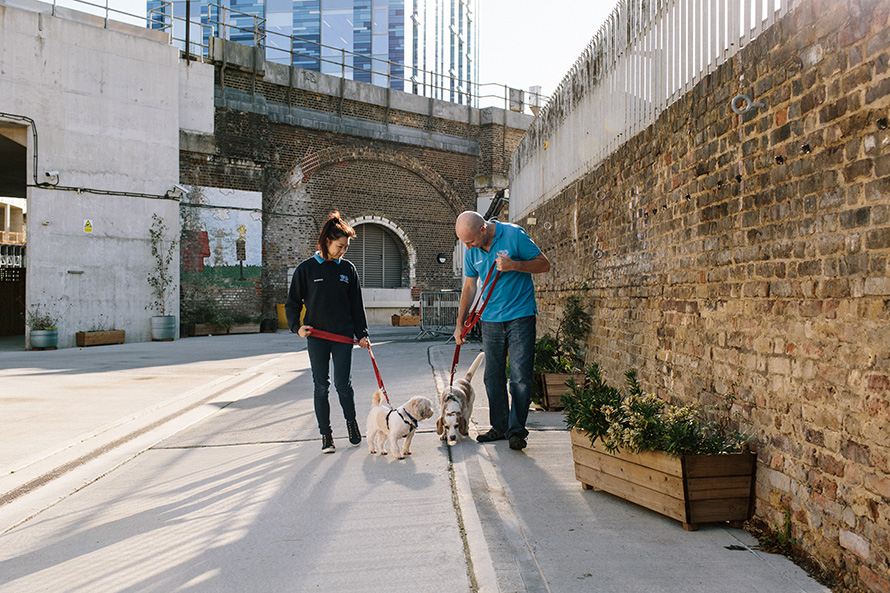
Troubleshooting and top tips for lead training
Many factors can affect how well your dog responds to this training. Excitement level, mental stimulation, the weather, your dog’s health, the surroundings, and even your own mood can all contribute.
Simply by asking your dog to sit calmly for their lead to go on and to sit while the door(s) open can bring down their level of excitement and help them to be more receptive to training. Try to avoid exciting them with words such as “walkies” as the calmer they are, the better they will be able to concentrate.
The most important thing is to be consistent with your training. Each time your dog is taken out, you should be reinforcing what they’ve been taught. If pulling on the lead gets your dog the reaction they want, they will keep pulling, so make sure you immediately stand still the moment any tension goes on the lead. To keep yourself steady when your dog pulls, hold your lead hand against your core and use both hands if necessary. Make sure every member of the household is using the same technique as well as anyone else who might take your dog out, including friends or a dog walker.
Download the advice on this page as a handy advice sheet and to use as a reminder:
